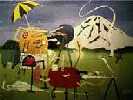
|

Project 2: Modeler - Required Extensions |
|
 CSE Home CSE Home |
 CSE 457 CSE 457 |
 Modeler Modeler |
 About Us About Us |
 Search Search |
 Contact Info Contact Info |
|
Project RequirementsThis project does not have a lot of requirements. However, the additions that we do require are definitely more complex than the ones for the first project. Also, there are many more possibilities to extend your project! Please start early.
Other than these requirements, you have complete artistic freedom on this, so be creative! |
|||||||||||||||
|
Computer Science & Engineering University of Washington Box 352350 Seattle, WA 98195-2350 (206) 543-1695 voice, (206) 543-2969 FAX [comments to ethel] | |